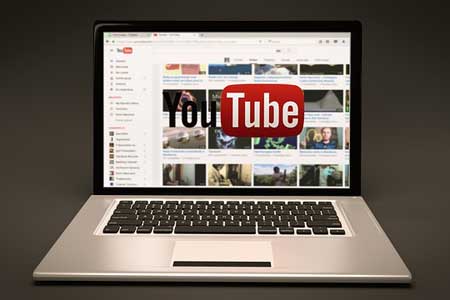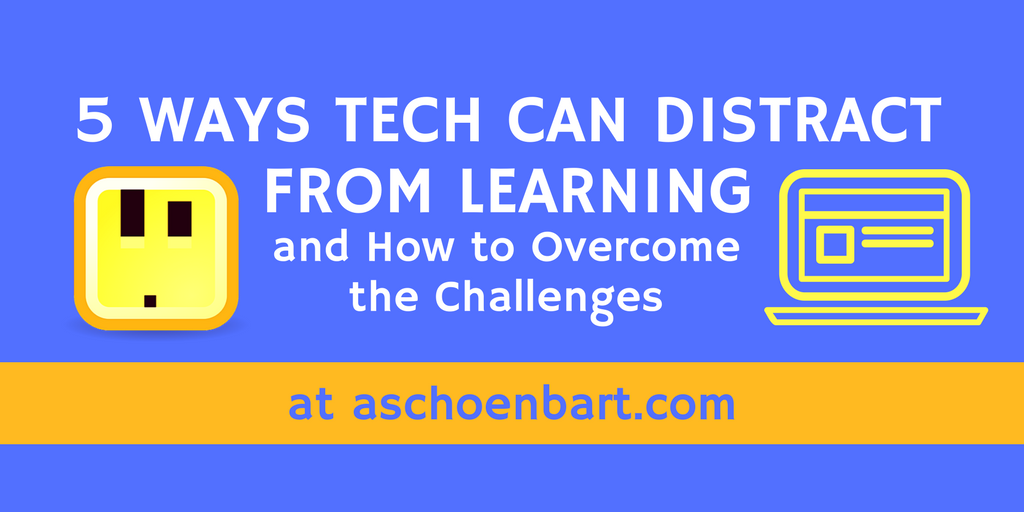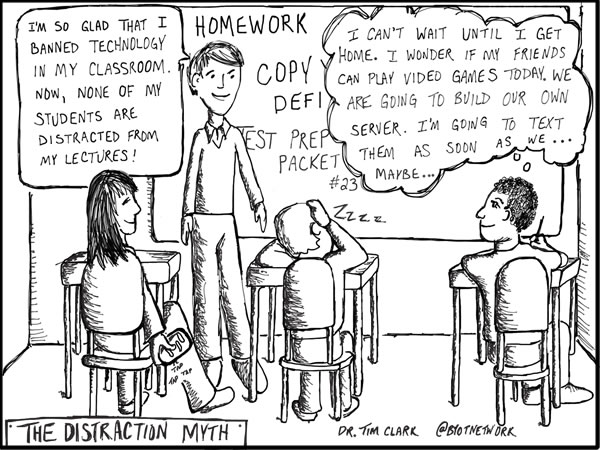5 Ways Tech Can Distract From Learning and How to Overcome the Challenges


Does learning with technology always represent real knowledge and achievement? When does technology actually distract from learning instead of enhancing it?
These are two questions that I’ve been thinking about lately as I explore more opportunities for formative assessment, technology, and actionable data. I’ve explored these ideas in detail inData Driven DudsandMake Data Matter!
I was led to these questions after an awesome morning spent with three members of the Kahoot! team. After a quick Twitter and e-mail exchange, Kaja, Alex, and Rik, who were visiting NYC form Norway, came to Ossining High School to talk with teachers and students about how they are using Kahoot!, apps, formative assessment, and so much more.
We spent time watching a class play in a lesson and with student and teacher focus groups. Most of the students had a lot of great things to say about Kahoot!, and about other tools like it. They liked learning with technology and generally felt like it made learning fun. But I couldn’t help but think about some of their frustrations with gamified tools for formative assessment.
Some of these tools require students to learn at the teachers’ pace, force students to race against a clock, or make it difficult to see all of the information at once. I’ll often hear a shout of regret from a student who clicks the wrong answer because of their trigger-happy drive to win. But does that translate to a drive to learn?
Simply put, does a game like Kahoot! really represent what a student knows? They seemed to think so. Often times, I do, too. But there’s no silver bullet or one-size-fits all answer.
Instead, it got me thinking about when technology does more harm than good. And more importantly, what can teachers do to overcome these challenges to make our use of technology more successful?
Tools and ideas to transform education. Sign up below.
1. Tech Hasn’t Changed Learning
Technology isn’t always going to transform learning in every single lesson. We can’t do it all every time. But it needs to help students and teachers do something better or differently than they could before. When technology simply acts as a substitute for paper or traditional instruction, it becomes a very expensive but dysfunctional tool.
Instead, make focus your planning on helping provide more opportunity for students to show what they’ve learned through technology. While SAMR (see Kathy Schrock’s SAMR Page for a great resource) isn’t my favorite model to discuss technology, it’s important to always be thinking about the higher level skills and application to make learning better. Do more than substitute paper for a screen.
2. The Tech is the Lesson
I probably won’t use a hammer to cut a piece of wood. It’s not the right tool for the job. Technology is a tool, and needs to be viewed as one. Too often, the technology becomes the lesson rather than a tool or activity to meet learning outcomes.
Instead, ask yourself how or why the technology is essential or transformative to learning. Clarify, for yourself and for your students, the instructional goals to determine if the technology is appropriate and meaningful. Students may enjoy the Kahoot! game but they only learn from it when it supports a strong instructional design.
3. Overwhelmed by Choice
One of the best parts about using technology is the opportunity for access and choice that it provides our students. What was once restricted by a textbook and paper is now limitless. But that choice is scary sometimes, too, and can be overwhelming. When my students use Kahoot! in one class, and then Quizlet, Pear Deck, and Socrative in the next, I want to know why. Similarly, when they can demonstrate learning with a video, Google Slides, Doc, game, podcast, Spark, or a million other choices, we have know how to make the best ones with technology.
Instead of simply providing choice, help students become critical consumers and producers so they can evaluate and explain their choices. Sometimes it’s best to limit the choices and other times to give over control; just make sure teachers and students always know why so that the choice of technology doesn’t become the end result.
Tim Clark addresses some of these same issues in the article The Distraction Myth of Learning with Technology, where he features the cartoon above.

4. Access Woes
Whether it’s devices, software, or wifi, it seems routine that the technology somehow fails just when you need it. Sometimes it’s that the old laptops take too long to turn on. Other times wifi drops, work doesn’t save, or students’ don’t want to use their data. These issues of access are real ones, and they speak to bigger issues of infrastructure, leadership, and equity. Bad wifi can make the best intended or designed lesson fall apart.
Make sure you understand your school and students’ levels of access to service and devices and consistency of that access. Some schools are certainly better equipped than others and technology is more and more prominent, but until we can expect the internet to work as easily as turning on a light switch, it’s a real problem. For me, these challenges don’t mean to shy away from technology, but to always have backups--as frustrating as that may be, to be flexible, and to make the best of every situation.
5. Technology As a Reward
If we want students to really understand the power of technology in their learning, then it needs to be purposeful, regular, and expected. Games--whether they are assessment tools, gamification, or just for fun, certainly have their place, but just like the technology shouldn’t be the lesson or objective, it shouldn’t be viewed as a reward either. Technology that only rewards students doesn’t prioritize learning, it undermines the power of the tool and the educational value.
A reward has to be earned. It can be taken away. Only some students will get it. When we look at technology through the lens of the reward, it sends a dangerous message about it’s role in our classrooms and schools. I’m all for making learning fun, but let’s help students see the impact of the technology in their learning first.
Tech Thoughtfully
Every 41-minute period in my classroom and yours matters. We have a lot of power and responsibility in educating young minds, and like with every other decision teachers make, we need to make our choices about technology thoughtfully.
It was a visit with Kahoot! that sparked some of these ideas, and while I love the site for so many things, it reminded me that no one tool is right for every lesson, student, or teacher. The conversations with the Kahoot! team and my students also reminded me that sometimes our students are more interested in the technology and the engagement than they are the learning. And they’re kids--who can blame them?
That just means that it’s our jobs to make sure that technology isn’t a distraction, or even a neutral party in education. Instead, let’s make it a transformative instructional tool that matters to all of us.
What are the ways you have seen technology distract from learning? How have you overcome these challenges? Share your ideas in the comments or on Twitter @MrSchoenbart.
cross posted at www.aschoenbart.com
Adam Schoenbart is a high school English teacher, Google Education Trainer, and EdD candidate in Educational Leadership. He teaches grades 10-12 in a 1:1 Chromebook classroom at Ossining High School in Westchester County, NY and received the 2014 LHRIC Teacher Pioneer Award for innovative uses of technology that change teaching and learning. Read more at The SchoenBlog and connect on Twitter @MrSchoenbart.
